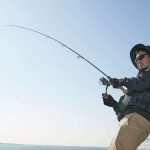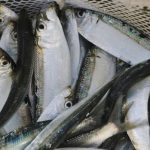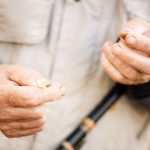The snook is the most popular game fish in the state of Florida, and happen to also be the most sought after fish by fishermen. This is why the fans of snook season were united in an unprecedented mission to rescue the snook population for the last three years. After eleven consecutive days of a devastating cold spell with below freezing temperatures back in 2010, almost one third of the snook were killed along the Gulf shores. The Florida Fish and Wildlife Conservation Commission made an emergency ordinance that banned snook season throughout the Florida coastlines.
This was the first time something like this had happened. The Florida shores were lined with the rotting dead snook for at least a month. It is estimated that almost 30% of the population of snook were floating belly up across the Tampa Bay. Most are thought to be the juvenile fish living closer to shore in the shallow water, but many were larger snook as well. There are some fishermen that said you could walk through the bay and be walking on dead snook instead of the ocean floor. Although three years is like an eternity to keep a season closed for the most popular fish in the state, everyone agreed that it would indeed need to be done, and would most likely fix the problem by allowing the population time to grow.
Fishermen from Cedar Key all the way down to the Florida Keys stopped fishing them and decided to wait for the population to replenish itself. They are hoping that by not fishing the popular game fish, it will have more spawning potential and bring back the population in a robust way. The snook’s draw is the black line that goes from their gills to their tail, their pearl-like belly, and their sleek torpedo-like shape. For the first time in history, it was illegal to keep the snook when caught, but finally, as of September 1 2013, it is now legal to keep the snook caught from the Atlantic and Gulf of Mexico regions.
According to many Florida fishermen, the snook, known as the “Florida fish” is a fun fish to catch. Similar to a large mouth bass on steroids, the larger ones are harder to catch because they fight back. But if you’re lucky enough to reel it in, they are delicious at meal time. Known as an icon amongst Florida fishermen, the snook has an extensive profile on the state’s wildlife website.
Some fishing pros believe that even after the ban, snook are not as replenished as they should be. There doesn’t seem to be as many big snook, which can measure up to over 2 feet long. They believe that the ban should stay in place until the fish can get to the point where they were over three years ago.
During the ban, fishermen in search for some good catches had to change their trips and go further offshore to the much deeper water in search for other good fish to catch. Now that the ban is off, many anglers are practicing catch-and-release in order to get the population up to par. Many fishing guides are encouraging their clients to throw the popular fish back in so that there is no chance of the species disappearing in the future.
There are still some restrictions for Anglers in search of linesiders this brand new season. You are only allowed one snook per person each day. This fish must fit into a certain size range, which is larger than 28 inches, yet smaller than 32 inches. This ordinance is to protect the younger fish and the breeding fish. Snook cannot be taken between December 1st and the 28th of February, and also between May 1st and August 31st. A special snook license is also required, but costs very little and can easily be obtained from Walmart and other venues.
Snook can be found in the Atlantic Ocean, but also in the Caribbean Sea and the Gulf of Mexico, and down to Brazil. Their ocean home extends up to Cedar Key and Cape Canaveral. Florida is the only area in the United State where they live. They can’t be found on any other state’s coast within the US.
Try out a shiny silver or gold spoon on your next trip in search of snook.





